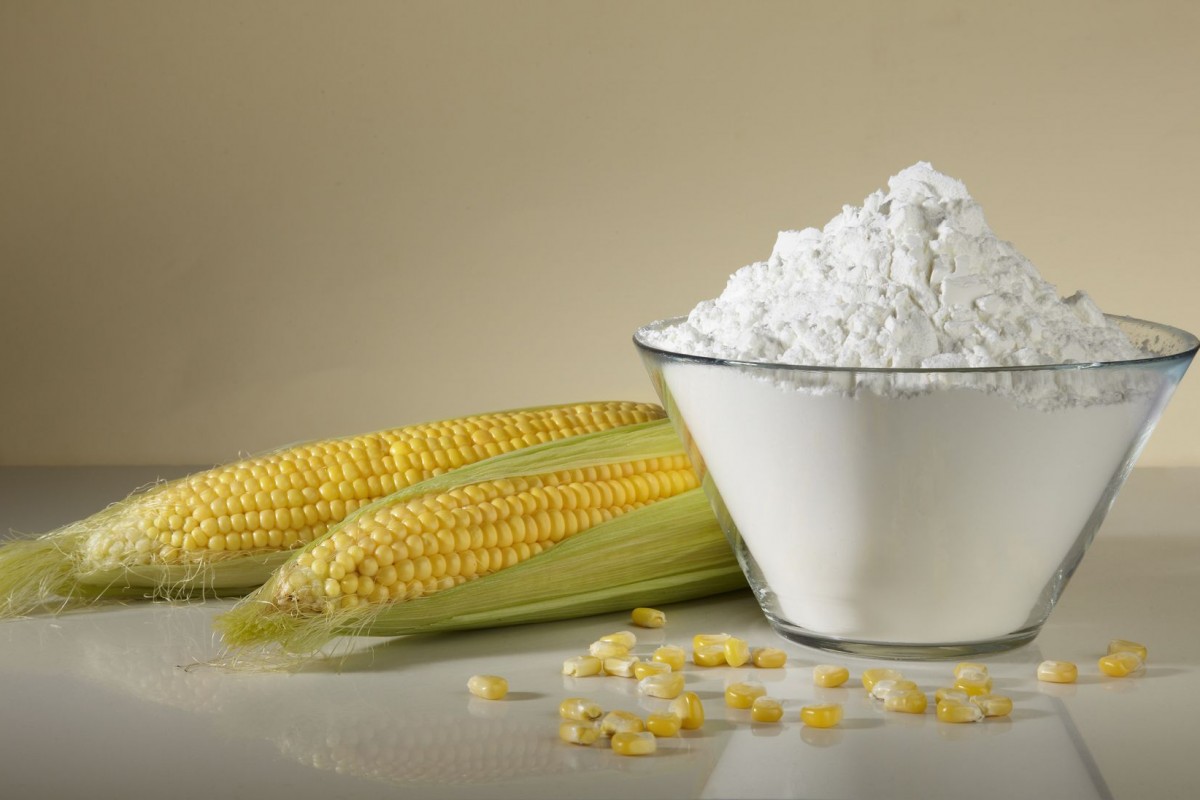
Maize Starch
Maize Starch chemical formula (C6H10O5)n also know as Corn starch or flour is a fundamental ingredient in most of the packaged food and industrial products; it is extracted from the corn kernel and has a distinctive appearance and feed. Maize starch in natural, modified, pregeletanised and dextrinised forms provides viscosity, texture and other desired properties to all types of food & paper, products from canned chilled frozen to microwaveable goods, dry mixes and extruded snacks. Practically every industry in existence uses starch or its derivatives in one form or another.
Functional Advantages
Maize Starch is most commonly used as a thickening and gelling agent for puddings, sauces, soups, etc. It provides an economical and reliable substitute to other ingredients which are unstable at higher temps.
Maize Starch helps in achieving the right degree of clarity, structure and mouth feel. It is also used to achieve chewiness in gums. They are equally useful as moulding powders and as ingredients of paste foods.
Maize Starch is an effective binder as it allows homogenous dispersion of water in foodstuffs, and acts as a stabilizer. It is an ingredient of choice (along with other modified starches) in the manufacture of soups salad dressings, bakery products, various desserts. It is a binder and filler or choice in the Pharma Industry for tabletting on the application. It acts diluents disintegrating agent.
Native Starch is used to provide dry strength and as a surface improvement aid in alkaline paper making, Starch is a critical part of wet-end sizing it is an integral part of micro-particle retention and works as a binder, water holding agent and carrier for surface sizing chemicals and other functional additives. In the manufacture of textiles Starch keeps the yarn straight and strong significantly improving its ability to with stand the stress of weaving.
Native Corn Starch forms the basic ingredient for all corn sweeteners. A variety of enzymatic and acid-catalyzed processes are used for the manufacture of corn sweeteners which are used in food to provide clean, sweet taste, retain moisture, control crystallization and freezing points, contribute to texture, provide gloss, maintain colour, inhibit spoilage and modified density. Corn sweeteners are a major commodity and include products such as Sorbitol, Malto-Dextrins, Glucose Syrups, Dextrose, High Maltose Syrups, etc.
Maize Starch is an economical fermentation feedstock to produce many organic chemicals. The most widely know bio product is Ethanol it is made by fermenting sugars produced from Maize Starch. Ethanol produced from corn starch promised a renewable source of fuels for care and other engines with environmental advantages.
Another fascinating type of compound produced from Maize Starch by the action of a cyclodextrin-transglycosylase enzyme is the cyclodextrins (Shardinger dextrin's cycloamyloses) cyclodextrins stabilize substance's that are degradable by or sensitive to light, heat, oxygen and ions, reduce volatility and bad odor transform viscous oily liquids to stable flowing powders enhance solubility effect by slow release,remove unwanted flavors in juices and beverages. These properties would be useful in the fields of Pharmaceuticals, Processed Foods, Cosmetic's, Toiletries and Agro-Chemicals’.
Since the starch is totally biodegradable in a wide variety of environments it allows for the development of totally degradable products for specific market needs. Bio plastics from renewable origin are a new generation of plastics able to significantly reduce the environmental impact in terms of energy consumption and green-house effect in specific applications. Bio plastics perform as traditional plastics when in use and are completely biodegradable within a composting cycle. Examples fast food service-ware (cups, cutlery, plates straws, etc.) packaging (soluble foams for industrial packaging, film wrapping, laminated paper, food containers) Agriculture (much films, nursery pots, plant labels) Hygiene (diaper back sheet, cotton swabs).
Keep away from heat. Keep away from sources of ignition. Empty containers pose fire risks. Ground all equipment containing material. Do not breathe dust. Keep away from incompatibles such as oxidizing agents. Keep container tightly closed. Keep container in a cool well ventilated area. Do not store above 230oC.



